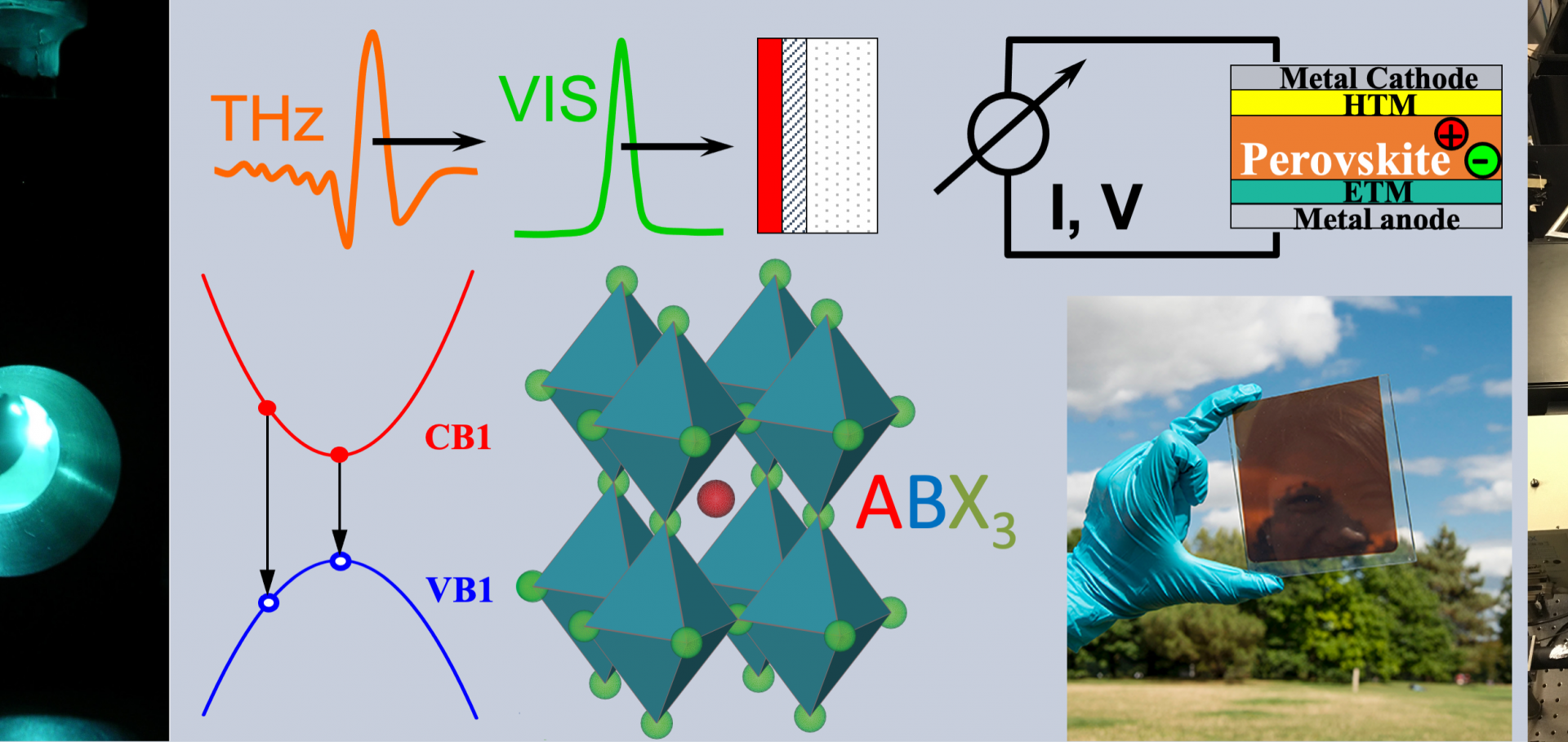Nanoengineering coaxial carbon nanotube-dual-polymer heterostructures.
ACS Nano 6:7 (2012) 6058-6066
Abstract:
We describe studies of new nanostructured materials consisting of carbon nanotubes wrapped in sequential coatings of two different semiconducting polymers, namely, poly(3-hexylthiophene) (P3HT) and poly(9,9'-dioctylfluorene-co-benzothiadiazole) (F8BT). Using absorption spectroscopy and steady-state and ultrafast photoluminescence measurements, we demonstrate the role of the different layer structures in controlling energy levels and charge transfer in both solution and film samples. By varying the simple solution processing steps, we can control the ordering and proportions of the wrapping polymers in the solid state. The resulting novel coaxial structures open up a variety of new applications for nanotube blends and are particularly promising for implementation into organic photovoltaic devices. The carbon nanotube template can also be used to optimize both the electronic properties and morphology of polymer composites in a much more controlled fashion than achieved previously, offering a route to producing a new generation of polymer nanostructures.Morphology-dependent energy transfer dynamics in fluorene-based amphiphile nanoparticles.
ACS Nano 6:6 (2012) 4777-4787
Abstract:
Nanoparticles are interesting systems to study because of their large range of potential uses in biological imaging and sensing. We investigated molecular nanoparticles formed by fast injection of a small volume of molecularly dissolved fluorene-derivative amphiphilic molecules into a polar solvent, which resulted in solid spherical particles of ∼80 nm diameter with high stability. Energy transfer studies were carried out on two-component nanoparticles that contained mixtures of donor and acceptor amphiphiles of various fractions. We conducted time-resolved photoluminescence measurements on the two-component nanoparticles in order to determine whether the fundamental donor-acceptor interaction parameter (the Förster radius) depends on the acceptor concentration. The Förster radius was found to be large for very low incorporated acceptor fractions (<0.1%), but it declined with increasing concentration. These changes were concomitant with shifts in the acceptor emission and absorption circular dichroism spectra that indicated an increasing clustering of acceptors into domains as their fraction was raised. In addition, for acceptor fractions below 2% the extracted Förster radii were found to be significantly larger than predicted from donor-acceptor spectral overlap calculations, in accordance with efficient excitation diffusion within the donor matrix, aiding the overall transfer to acceptors. We conclude that energy transfer in two-component nanoparticles shows a complex interplay between phase segregation of the constituent donor and acceptor molecules and excitation diffusion within their domains.Ultrafast dynamics of exciton formation in semiconductor nanowires.
Small 8:11 (2012) 1725-1731
Abstract:
The dynamics of free electron-hole pairs and excitons in GaAs-AlGaAs-GaAs core-shell-skin nanowires is investigated using femtosecond transient photoluminescence spectroscopy at 10 K. Following nonresonant excitation, a bimolecular interconversion of the initially generated electron-hole plasma into an exciton population is observed. This conducting-to-insulating transition appears to occur gradually over electron-hole charge pair densities of 2-4 × 10(16) cm(-3) . The smoothness of the Mott transition is attributed to the slow carrier-cooling during the bimolecular interconversion of free charge carriers into excitons and to the presence of chemical-potential fluctuations leading to inhomogeneous spectral characteristics. These results demonstrate that high-quality nanowires are model systems for investigating fundamental scientific effects in 1D heterostructures.Extreme sensitivity of graphene photoconductivity to environmental gases.
Nat Commun 3 (2012) 1228
Abstract:
Graphene is a single layer of covalently bonded carbon atoms, which was discovered only 8 years ago and yet has already attracted intense research and commercial interest. Initial research focused on its remarkable electronic properties, such as the observation of massless Dirac fermions and the half-integer quantum Hall effect. Now graphene is finding application in touch-screen displays, as channels in high-frequency transistors and in graphene-based integrated circuits. The potential for using the unique properties of graphene in terahertz-frequency electronics is particularly exciting; however, initial experiments probing the terahertz-frequency response of graphene are only just emerging. Here we show that the photoconductivity of graphene at terahertz frequencies is dramatically altered by the adsorption of atmospheric gases, such as nitrogen and oxygen. Furthermore, we observe the signature of terahertz stimulated emission from gas-adsorbed graphene. Our findings highlight the importance of environmental conditions on the design and fabrication of high-speed, graphene-based devices.Belt-shaped π-systems: relating geometry to electronic structure in a six-porphyrin nanoring.
J Am Chem Soc 133:43 (2011) 17262-17273


